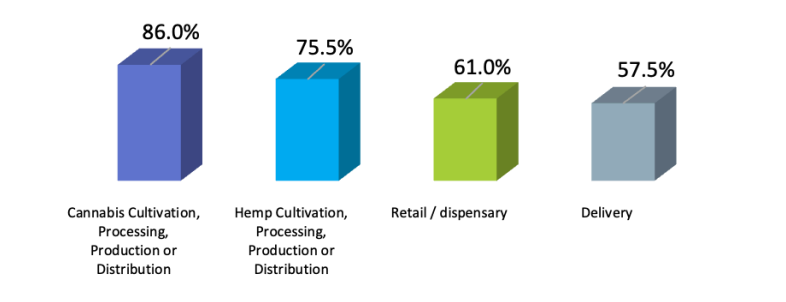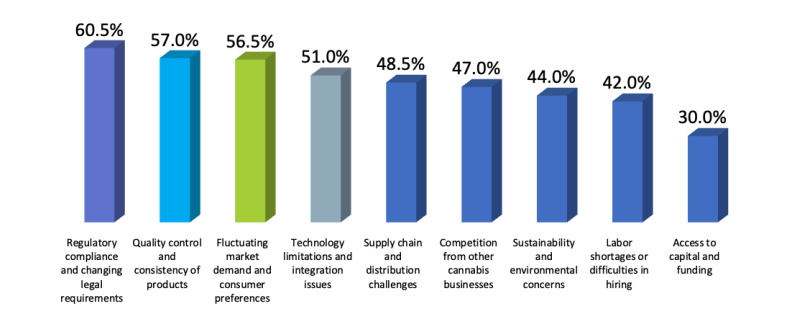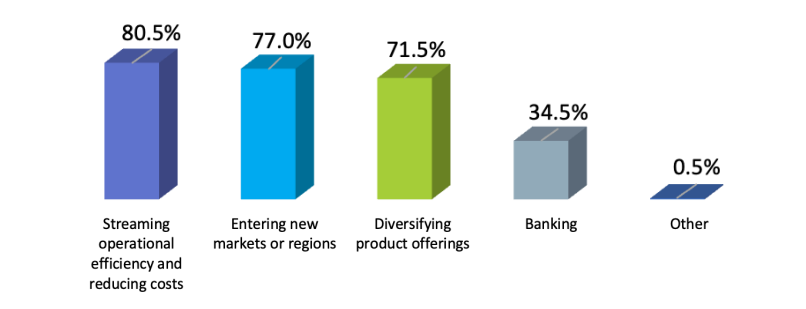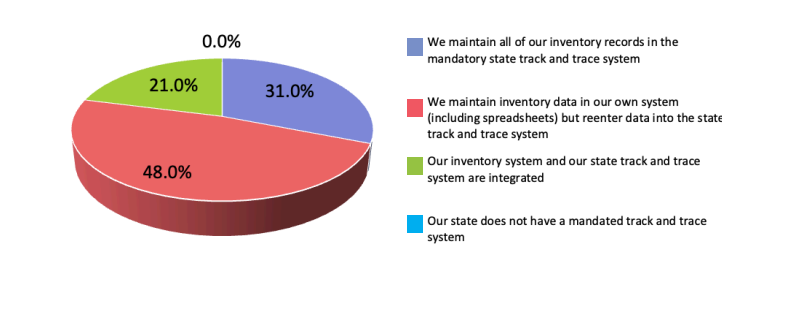3 Cannabis Industry Trends We Learned from Our 2024 Report
Our team recently ran a survey to 200+ cultivators and distributors. These are 3 cannabis industry trends we learned from our report.
Cannabis cultivators and distributors continue experiencing growth opportunities, with more states giving the green light to legalization.
While it’s an exciting time, these new cannabis industry trends come with some special challenges as businesses enter complicated regulatory areas, changing consumer preferences, and growing competition.
To help you tackle these issues head-on, our team recently published the State of the Cannabis Industry report for 2024. Our research includes survey questions given to over 200 cultivators and distributors that focus on three key areas:
From getting the lowdown on day-to-day operations to managing the money and exploring new tools, it’s a peek into the heartbeat of our industry and where it’s racing off to next. Plus, I’m giving you my take on what these trends might be hinting at on a deeper level.
Diving into the report, it’s clear the cannabis industry is…evolving.
It encompasses everything from growing and processing to manufacturing, distribution, and sales. Survey respondents represent each key business type in the cannabis industry:

Two key areas the report explores include operational hurdles and strategic approaches to growth. Based on survey results, cultivators and processors identified the top nine issues they deal with:

The survey also identified the big opportunities for growth in the cannabis industry:

Other key insights uncovered by the report include how the cannabis industry in the U.S. is going through significant growth and increasing its economic importance. With the majority of states (37) allowing medical or recreational cannabis programs, the industry is expanding—expected to reach almost $40 billion by the end of 2024.
The opening of new adult-use markets contributes to this growth, with total cannabis sales expected to rise to $52.6 billion by 2026. This highlights the substantial impact of the cannabis industry on the overall U.S. economy.
Despite these positive trends, the industry faces some other hurdles. But the big one?
The whole federal classification mess and a regulatory jungle that varies by state.
It’s a headache, for sure, as each state interprets and implements compliance standards. Not to mention there’s no legal distinction between marijuana and substances like heroin, LSD, ecstasy, and bath salts. This complex regulatory landscape makes it difficult for businesses trying to comply with diverse state regulations.
As a result, many cannabis businesses adopt the latest advancements in tech.
For example, the rise of Industry 4.0—which includes technologies like artificial intelligence (AI), robotics, computer vision, and machine learning—plays a huge role in improving efficiency and profitability.
Using cutting-edge technologies (especially automation) is also a key factor in growth. This approach allows companies to improve efficiency and reduce labor costs by automating tasks such as plant trimming, harvesting, and packaging.
By letting automation handle the daily mundane tasks, we can focus on the stuff that really matters—quality, innovation, and chatting with our customers.
To uncover financial insights, one of the questions we asked was how companies make sure they follow regulations for parts of their business (like inventory) that do not involve selling directly to customers:

The responses show the different ways companies handle regulations in various aspects of the cannabis industry and reveal the dedication to creating a responsible and compliant business environment.
One of the key trends to watch for here is how nearly half of the respondents (48%) maintain their inventory data in spreadsheets. Maintaining inventory data manually can cause some pretty rough headaches, like capturing inaccurate inventory records.
This outdated method could also lead to backlogs and discrepancies, which could expose you to fines and penalties from regulators. Plus, the risk of inaccurate inventory records increases with manual data entry, potentially resulting in compliance violations and operational inefficiencies.
If you’re still knee-deep in the spreadsheets, we know these issues have likely happened a time or two.
It’s time for the advice you maybe didn’t know you needed to hear…it’s time to kick the spreadsheets to the curb.
The new way? A solid ERP (Enterprise Resource Planning) solution.
These solutions help lead to business growth—offering centralized data, automation, traceability, and integrated analytics. Despite concerns about initial costs and implementation challenges, industry experts argue that the long-term benefits of ERP—enhanced efficiency, accuracy, compliance, and scalability—justify the transition for sustained growth.
With advanced track and trace features, cannabis companies can efficiently manage inventory and improve production processes. And because the leading ERP solutions include features like lot control and quality tracking, they can play a huge role in helping you follow compliance rules.
No more late nights head scratching about missing data.
Enjoy learning about these cannabis industry trends from our report for 2024? You can download (for free) the full report on this page, and gain more knowledge around technology, consumer preferences, and geographic expansion trends.
Read it today or save it for later. The choice is yours.
And when you’re done, reach out to me at ssilver@velosio.com to let me know if our findings stack up with what your business is currently experiencing today in the real world.